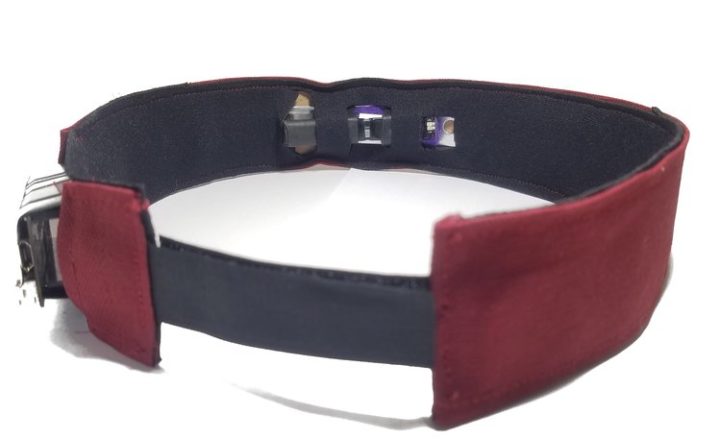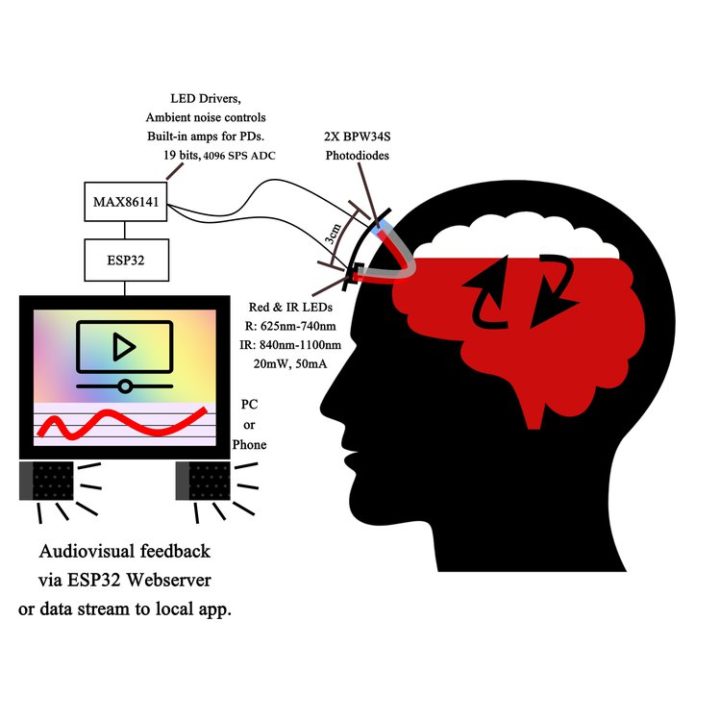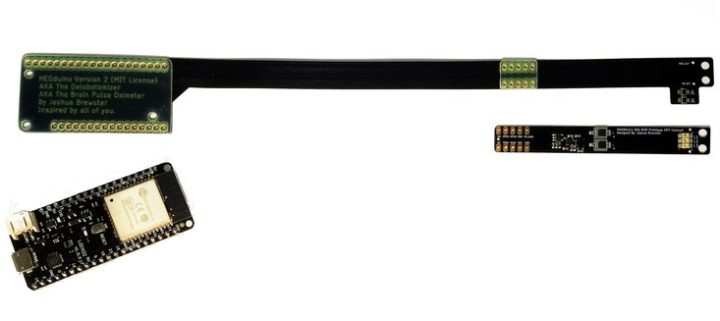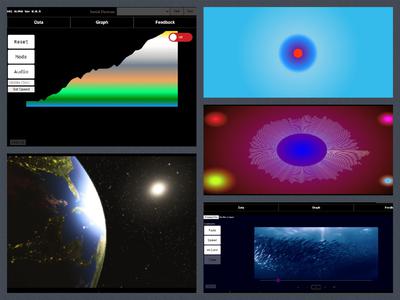AlasKit has launched a crowdfunding campaign on Crowd Supply for HEGduino V2. The device features noninvasive optical imaging through fNIRS (Functional near-infrared spectroscopy), apart from its brain blood flow monitoring functionality. We saw the previous version of the HEGduino in September 2019 which only supported blood flow monitoring. But the HEGduino V2 also monitors breathing, heart rate, and skin temperature.

HEGduino V2 has a MAX86141 optical pulse oximeter cum heart-rate sensor for incorporating Heart Rate Variability (HRV) training. It also allows breath and skin temperature monitoring. The sensor has a specification of 2×4096 SPS sensing with a 19-bit resolution which is a bit higher than its previous version. As HEGduino V1 had an 860 SPS sensing with a 16-bit resolution. However, the practical application observes even lesser values for HEGduino V1.
Setup of HEGduino V2
The device also comes with an ESP32 breakout board with rechargeable battery support. The board helps in the interfacing of the HEGduino V2 with your local machine. As the ESP32 board is compatible with Arduino IDE and ESP-IDF, it allows complete customization of the core firmware. You can also play around with WiFi and Bluetooth of the ESP32 board for exploring the flexible connectivity of the device.

The pair of BPW34S photodiodes directly interface with the forehead for optical sensing of the brain blood flow. There are also two IR LEDs and one Red LED for functional Near-Infrared Spectroscopy (fNIRS) for the reception of the data on brain activity and brain health. It allows the evaluation and monitoring of oxygen levels of the blood.
The information collected by the sensor can be monitored on the screen. Further, the interface assists you with breathing exercises and receiving vital Audiovisual feedback “on how well our brain is circulating blood and energy.”
This feedback can be seen through the ESP32 web server or on the local app by streaming the data via sensors.

Software Support
HEGduino V2 is compatible with the open-source (GPLv3) Brains@Play general Brain-Computer Interface (BCI) platform for developing neurofeedback experiences for personal use. As it is open-source, so beginners and students can also contribute and build a wide range of brain applications.

AlasKit explains that “the new platform supports multiple simultaneous users, remote-streaming, GPU-accelerated real-time signal analysis and visualization, and various types of concurrent hardware streams, including EEG, HEG, and streams from novel devices like Neurosensory.”
You can check out the original web application of HEGduino V2 here. Also, the alpha version of the Brains@Play progressive web app is available. Additionally, the open-source project includes schematics, design files, firmware, software, and a whitepaper on AlasKit’s GitHub repository. There are various options for backing this project starting at $35, you can visit Crowd Supply’s page for more information.

Saumitra Jagdale is a Backend Developer, Freelance Technical Author, Global AI Ambassador (SwissCognitive), Open-source Contributor in Python projects, Leader of Tensorflow Community India and Passionate AI/ML Enthusiast
Support CNX Software! Donate via cryptocurrencies, become a Patron on Patreon, or purchase goods on Amazon or Aliexpress




